Smaug regulates germ plasm assembly and primordial germ cell number in Drosophila embryos
- PMID: 38608012
- PMCID: PMC11014450
- DOI: 10.1126/sciadv.adg7894
Smaug regulates germ plasm assembly and primordial germ cell number in Drosophila embryos
Abstract
During Drosophila oogenesis, the Oskar (OSK) RNA binding protein (RBP) determines the amount of germ plasm that assembles at the posterior pole of the oocyte. Here, we identify mechanisms that subsequently regulate germ plasm assembly in the early embryo. We show that the Smaug (SMG) RBP is transported into the germ plasm of the early embryo where it accumulates in the germ granules. SMG binds to and represses translation of the osk messenger RNA (mRNA) as well as the bruno 1 (bru1) mRNA, which encodes an RBP that we show promotes germ plasm production. Loss of SMG or mutation of SMG's binding sites in the osk or bru1 mRNA results in excess translation of these transcripts in the germ plasm, accumulation of excess germ plasm, and budding of excess primordial germ cells (PGCs). Therefore, SMG triggers a posttranscriptional regulatory pathway that attenuates the amount of germ plasm in embryos to modulate the number of PGCs.
Figures
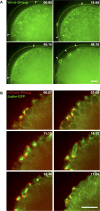


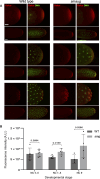
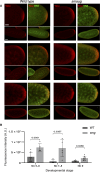

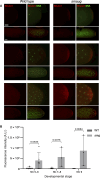
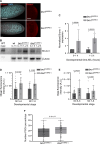
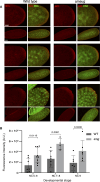

Update of
-
Smaug regulates germ plasm synthesis and primordial germ cell number in Drosophila embryos by repressing the oskar and bruno 1 mRNAs.bioRxiv [Preprint]. 2023 Feb 27:2023.02.27.530189. doi: 10.1101/2023.02.27.530189. bioRxiv. 2023. Update in: Sci Adv. 2024 Apr 12;10(15):eadg7894. doi: 10.1126/sciadv.adg7894. PMID: 36909513 Free PMC article. Updated. Preprint.
References
-
- Kim-Ha J., Kerr K., Macdonald P. M., Translational regulation of oskar mRNA by bruno, an ovarian RNA-binding protein, is essential. Cell 81, 403–412 (1995). - PubMed
-
- Bergsten S. E., Gavis E. R., Role for mRNA localization in translational activation but not spatial restriction of nanos RNA. Development 126, 659–669 (1999). - PubMed
Publication types
MeSH terms
Substances
Grants and funding
LinkOut - more resources
Full Text Sources
Molecular Biology Databases

